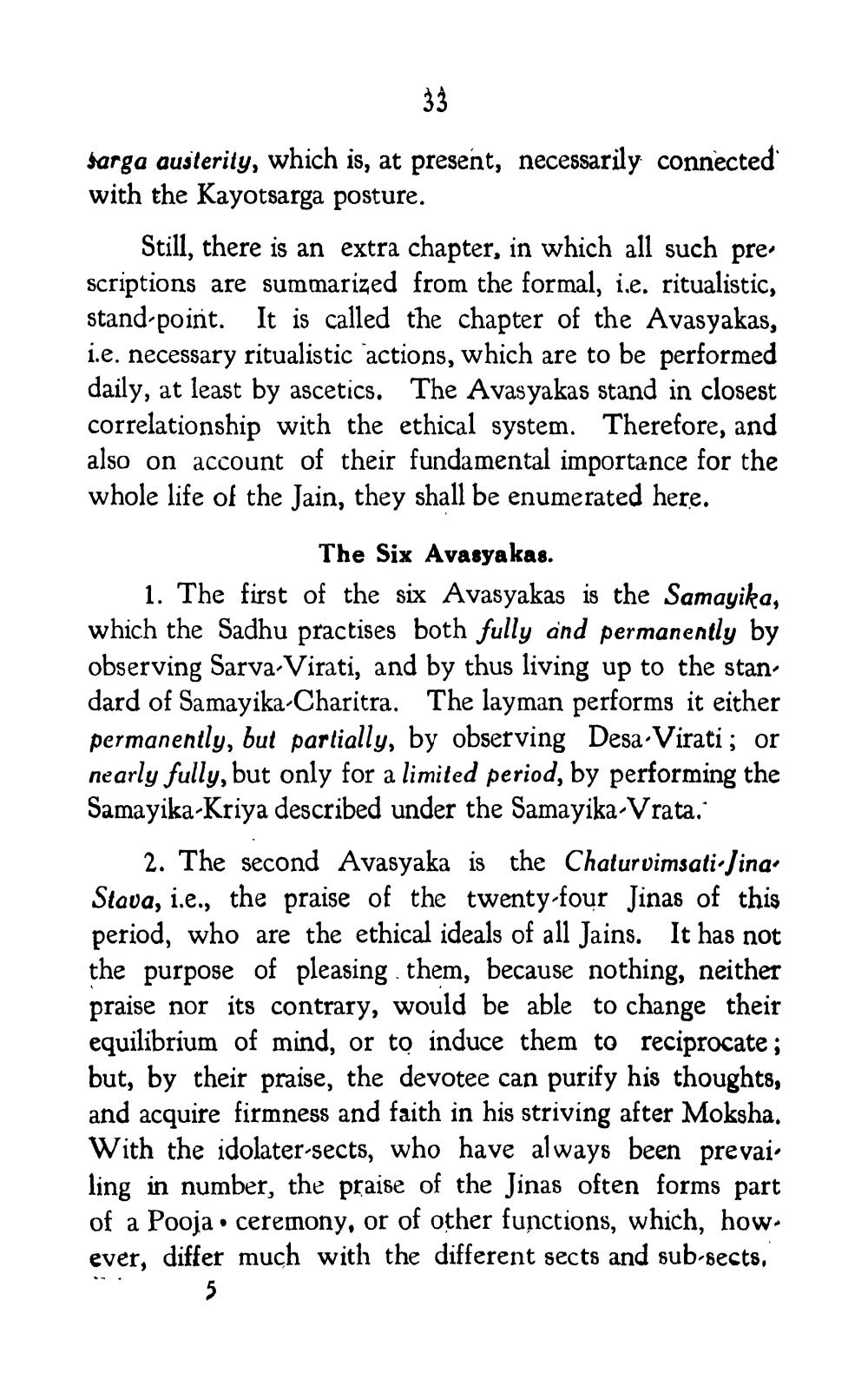________________
33
sarga austerity, which is, at present, necessarily connected with the Kayotsarga posture.
Still, there is an extra chapter, in which all such pre scriptions are summarized from the formal, i.e. ritualistic, stand-point. It is called the chapter of the Avasyakas, i.e. necessary ritualistic actions, which are to be performed daily, at least by ascetics. The Avasyakas stand in closest correlationship with the ethical system. Therefore, and also on account of their fundamental importance for the whole life of the Jain, they shall be enumerated here.
The Six Avasyakas.
1. The first of the six Avasyakas is the Samayika, which the Sadhu practises both fully and permanently by observing Sarva-Virati, and by thus living up to the stan dard of Samayika-Charitra. The layman performs it either permanently, but partially, by observing Desa Virati; or nearly fully, but only for a limited period, by performing the Samayika-Kriya described under the Samayika-Vrata.
2. The second Avasyaka is the Chatur vimsati-Jina Stava, i.e., the praise of the twenty-four Jinas of this period, who are the ethical ideals of all Jains. It has not the purpose of pleasing them, because nothing, neither praise nor its contrary, would be able to change their equilibrium of mind, or to induce them to reciprocate; but, by their praise, the devotee can purify his thoughts, and acquire firmness and faith in his striving after Moksha. With the idolater-sects, who have always been prevai ling in number, the praise of the Jinas often forms part of a Pooja ceremony, or of other functions, which, however, differ much with the different sects and sub-sects.
5
•




